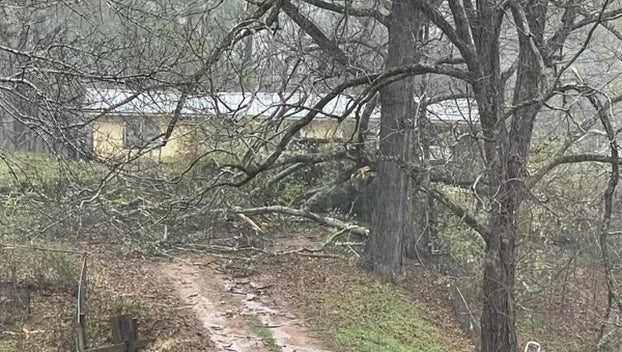Using data from Lake Mary, Lake St. John, researchers suggest work on Mississippi River has likely made floods worse
Published 11:11 am Friday, April 6, 2018

- An aerial view of flooding along the Mississippi River in 2018 near the Adams County and Wilkinson County borders. (file photo)
NEW ORLEANS (AP) — Flood control work in the Mississippi River and its tributaries has likely made floods worse in Mississippi and Louisiana, researchers say.
Using 500 years of data from tree rings and from sediment in oxbow lakes — bends that once were part of the Mississippi River but became lakes when the river changed its path slightly — they say the river has flooded more often and poured more water into those states over the past 150 years than any previous period.
Climate change may be responsible for about one-quarter of the difference, they estimate. Engineering, such as building levees and creating a straighter, narrow channel for navigation, is likely responsible for the rest, researchers from Massachusetts, Illinois, Alabama, South Carolina, Texas and Liverpool, England, say in Wednesday’s journal Nature.
Some outside scientists praised the entire paper. Others praised the “paleoflood” work but had doubts about the conclusion that flood engineering is the main reason floods are worse.
Lead researcher Samuel Munoz of Woods Hole Oceanographic Institution said he had expected to find early floods that were greater than more recent floods — not because the river was unrestrained, but because other research had covered a fairly recent period.
“I just expected that, given more time, you would see events that were bigger,” he said. “Because there’s a longer perspective, there’s more chance for something really big to happen.”
The researchers said climate variability, particularly the multidecade changes in the North Atlantic’s surface temperature, has played a big part in flooding over the centuries. However, they said, changes in such cycles would predict a much smaller increase than has occurred since 1800.
“The other likely culprit is something we’ve done to the river or basin,” Munoz said. The Mississippi River Basin drains all or part of 31 states and two Canadian provinces.
“Their palaeoflood record is compelling. … And if the authors are correct, and collective efforts to subdue the Mississippi have inadvertently pushed it to rise higher than ever, then the time might have come to consider loosening its restraints,” Scott St. George of the University of Minnesota wrote in a companion commentary.
However, he wrote, he thinks climate change could be the main driver behind the increased flooding. To test that, more work like Munoz’s is needed along the upper Mississippi and its main tributaries, he said.
Munoz said he and his colleagues are working on such studies.
“We have records we’re working on now from the Missouri River, the Ohio River and the Arkansas River — the big tributaries of the Mississippi. … We’re also doing this in the Houston area to put Hurricane Harvey into context,” Munoz said.
Such work isn’t possible on the upper Mississippi, where locks and dams have permanently submerged oxbow lakes, he said.
Upmanu Lall, director of the Columbia Water Center at Columbia University, said the work linking “floodiness” to climate cycles over five centuries is exciting.
But the argument about river engineering as the main driver is weak, Lall said. For one thing, he said, recent floods have included some very low as well as very high floods, but small floods probably didn’t leave sediment or tree ring records. The recent flood analysis also doesn’t offer any formal analysis of likely causes and ignores whether increased rainfall or changes in the landscape, such as Midwestern farm drainage, might be among them, he said.
Nicholas Pinter of Southern Illinois University at Carbondale said the study confirms and underscores what he described as extensive work he and others have done about flood frequency and magnitude over the last 100 to 150 years, and modeling studies looking forward.
It’s particularly notable that the study found large increases “along a stretch of the Mississippi that previous research has among the LEAST impacts of river engineering on flood levels,” he wrote in an email. “If the same research had been completed on the Middle Mississippi, the Lower Missouri, or parts of the Upper Mississippi, the increases in flood magnitudes and frequencies would have been MUCH greater.”
Munoz studied three oxbow lakes: Lake Mary, west of Woodville, Mississippi; False River Lake, northwest of Baton Rouge, Louisiana; and Lake St. John, in Louisiana about north-northwest of Natchez, Mississippi.
The scientists also used tree-ring data from a 2015 study by University of Alabama scientist Matthew Therrell, including three floods not described in that report.






